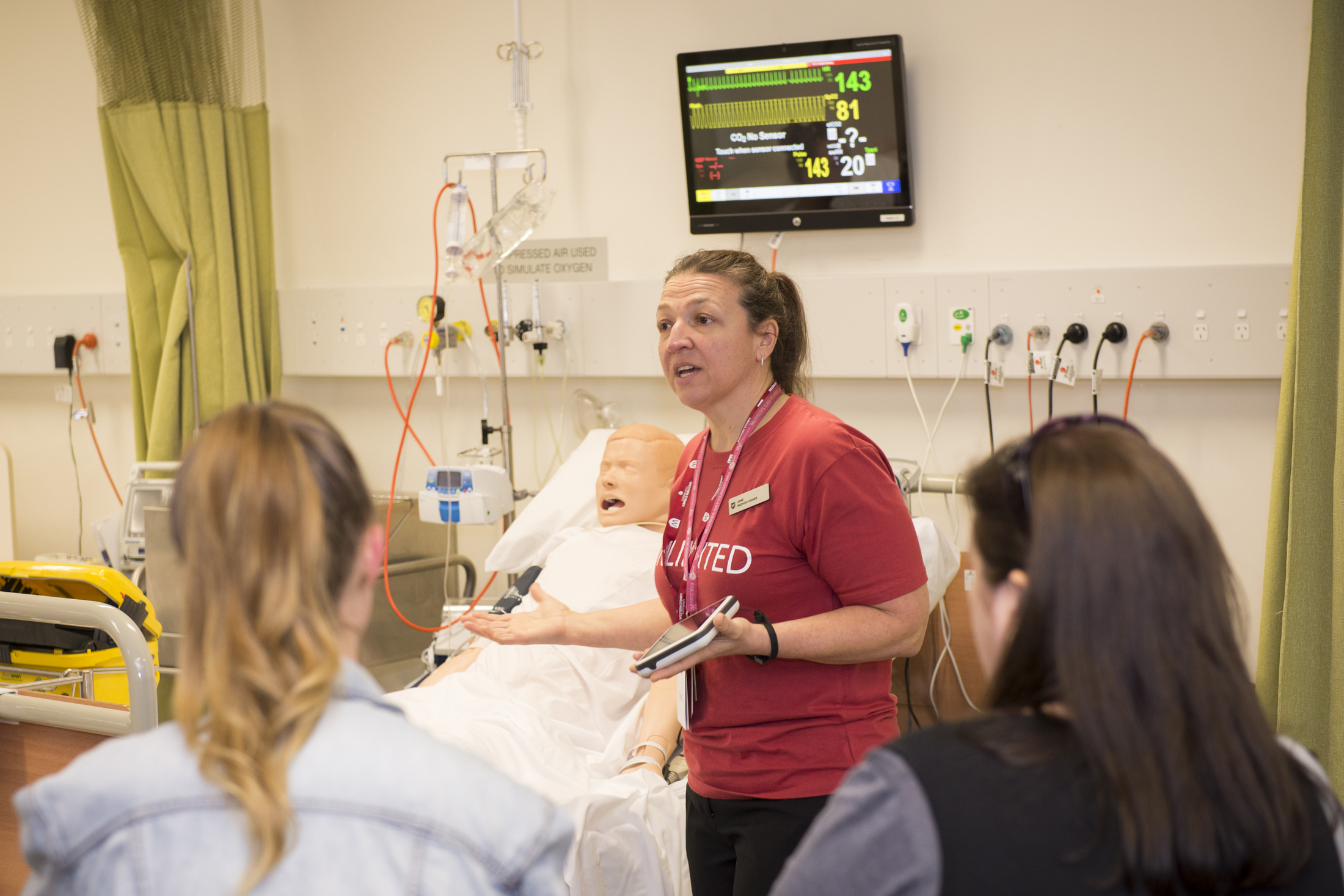Carving Out a New Community Role
You can search for courses, events, people, and anything else.
An international study examining the insertion of peripheral intravenous catheters, or PIVCs has identified an alarming number of dangerous practices. The work, led by Evan Alexandrou, a senior lecturer at Western Sydney University’s School of Nursing and Midwifery, has informed a national clinical standard for PIVC management, and a new catheter insertion course for nurses at WSU.
Alexandrou, who is also a Clinical Nurse Consultant for the Central Venous Access Service, based in the ICU at Liverpool Hospital, regularly encountered PIVCs barely covered by inadequate dressings, inserted in sites not recommended, such as elbow crooks, or not labelled with their insertion date. Improper PIVC insertion can lead to infection, inflammation, or device failure.
“I spoke to a few clinicians at conferences and professional gatherings, and they were finding similar outcomes,” he recalls. “I thought we should collect some data and see what’s going on at the coalface.”
Alexandrou, with colleagues from WSU and Griffith University in Queensland, designed a survey for hospitals in 2014 to assess how PIVCs were inserted and maintained on their wards, to glean adherence to international, best-practice guidelines.
Word spread quickly, Alexandrou said: “We went from a few hospitals participating to a few hundred.”
The project developed into a global study which surveyed the state of PIVCs in 450 hospitals from 51 countries, examining more than 41,000 PIVCs. The study focused on inpatients with long-term PIVCs. Hospitals were asked to assess all PIVCs in a ward throughout a day, providing a snapshot,” Alexandrou said. When the team analysed the data in 2015, they painted an alarming picture.
“Two-thirds of catheters were placed in the elbow crease, in the top of the hand or in the wrist, notorious areas for device failure,” he said.
“One in six catheters were redundant, so they were in, but didn’t need to be. One in four dressings weren’t put on properly and some devices were held on by non-sterile, brown tape.”
Around 10% of catheters were embedded in inflamed veins or were unnecessarily painful, and a further 10% were blocked, leaking or falling out.
“Australia was one of the worst performing countries. But, the study results have been a significant factor in the Australian Commission for Quality and Safety in Healthcare announcing the development of a national clinical standard for the management of PIVCs that all hospitals in Australia will need to follow,” Alexandrou said.
The parlous state of PIVCs wasn’t the only detail to surprise Alexandrou. “All around the world, around 70% of catheters are placed by nurses,” he said. “But in Australia and New Zealand, only 26% were put in by nurses.” Alexandrou wasn’t sure precisely why this was the case, but he suspected that it came down to nurses lacking the time or confidence to place PIVCs correctly.
To address this, Alexandrou designed a course that specifically teaches nurses how to best place and take care of PIVCs as well as central venous catheters. It was taught for the first time at WSU in 2018, and included information on how to use ultrasound to guide catheter insertion.
Ultrasound allows medical staff to ‘see’ through skin to the tissue layers below so they can place PIVCs on the forearm – the “gold standard” area, Alexandrou explained. He also wrote an algorithm that, based on ultrasound, calculated the appropriate size needle for a patient’s vein.
Paul Hilton, an after-hours clinical nurse consultant from St George Hospital was in the vascular access course’s inaugural cohort. An ex-army medic, Hilton has more than 10 years experience of inserting PIVCs. In his army days, Hilton said he would tend to insert a PIVC in an easy spot, such as the crook of an elbow. After completing Alexandrou’s course, however, his mindset changed. “Turns out you can teach an old dog new tricks!” Hilton laughed.
“You spend a bit more time setting up because you have to get the ultrasound [machine], you have to rearrange quite a bit of furniture, but even though it’s more time spent in preparation, it’s for a good result.”
The course has had immediate impact on the hospital wards with recent course graduates challenging current practices, this has included reducing the number of unnecessary PIVCs being inserted in patients that present to the Emergency Department and successfully troubleshooting more complex long-term vascular access devices that has improved the longevity of the catheters and reduced infection risk.
As Hilton says, people complain about two things in hospitals: the food and PIVCs. “We can definitely do something about the catheters.”
Meet the Academic | Evan Alexandrou
Evan Alexandrou is a Senior Lecturer with the School of Nursing and Midwifery at the Western Sydney University as well as a Clinical Nurse Consultant in the Intensive Care Unit at Liverpool Hospital where he coordinates the Central Venous Access Service which is internationally renowned for its clinical expertise in vascular access procedures.
Evan is involved in clinical education at an undergraduate and postgraduate level for Nursing and Medical training programs and is a conjoint lecturer with the Faculty of Medicine at the University of New South Wales. Evan is also an adjunct Associate Professor with the AVATAR Group based in the Menzies Health Institute at Griffith University in Queensland.
Related Articles
Credit
© Becton and Dickinson Australia
Future-Care is published for Western Sydney University by Nature Research Custom Media, part of Springer Nature.







